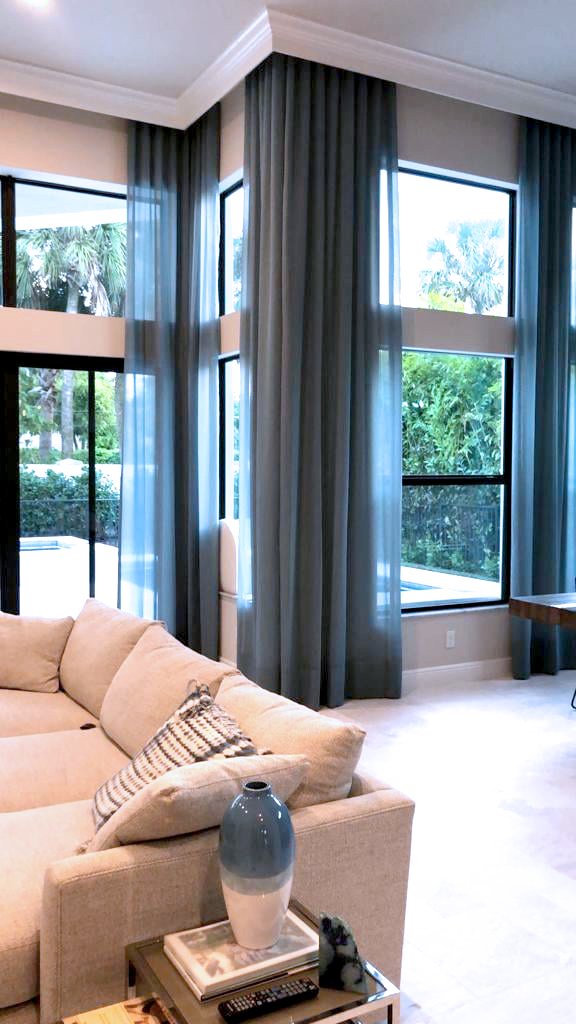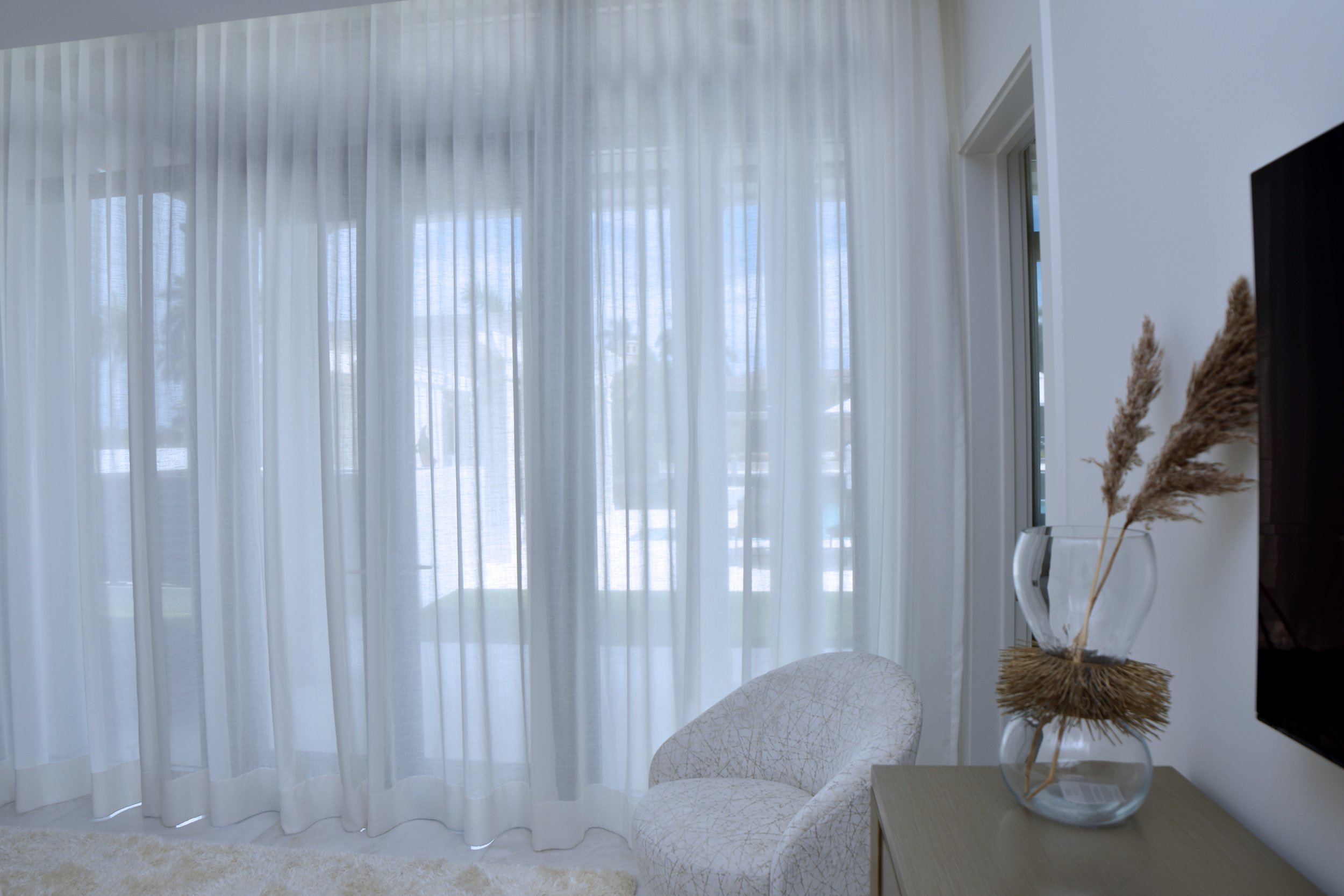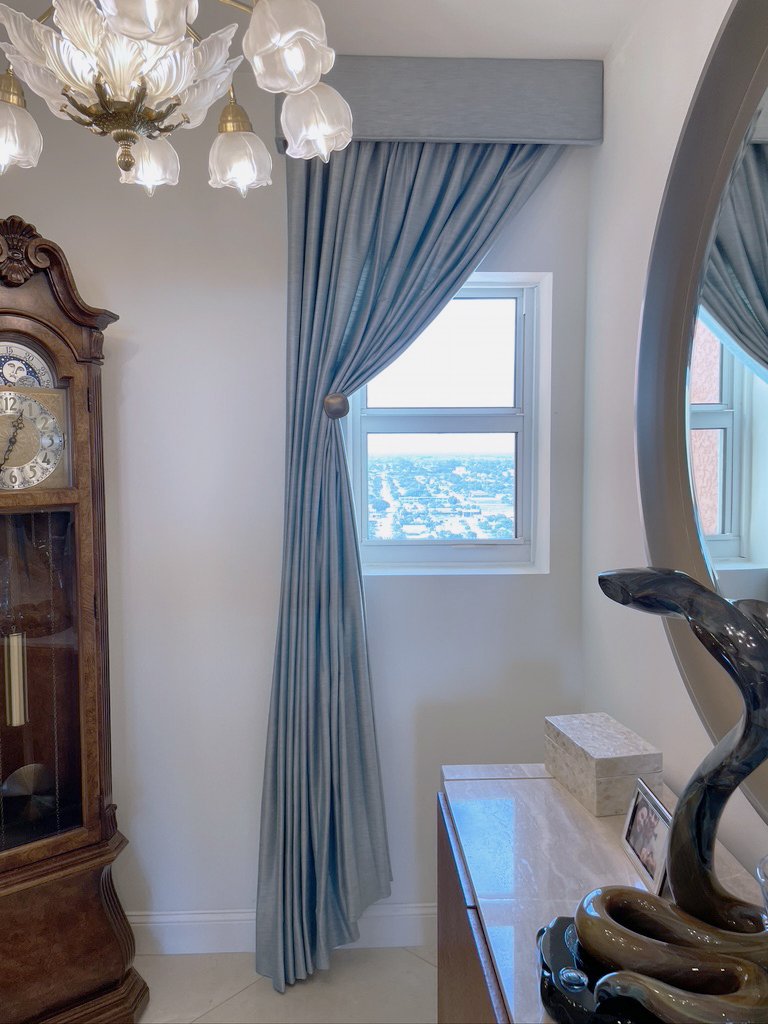Style Like a Pro - The Do’s and Don'ts of Window Treatment Design
Though usually the last element to add to a room, window treatments are an essential component of interior design. Window coverings have the potential to tie a room together exquisitely when done right, but when done wrong, they can ruin the entire space.
While there are a wide variety of window treatment options, two of the most popular, accessible, and easy-to-install treatments are curtains and drapes.
The key is finding styles that fit your taste and space and knowing how to hang them to make the most impact. You can use current window treatment ideas to help you stylistically.
There are so many things to consider when choosing drapes or curtains. You may be wondering how high above the window frame to place the rods, what is the correct curtain length and width for your window, and how to make window treatments look nice in every room. To make the right choices and avoid interior design faux pas, let’s explore some dos and don’ts of styling curtains and drapes.
1. Measuring Your Windows
Measure Window Height in Each Room
Did you know bedroom windows are typically higher than other windows? So while an 84-inch curtain may go all the way to the floor in your living room, you may need a 96-inch one to touch the floor in your bedroom.
DO: Measure each of your windows correctly.
Having accurate measurements will affect how your window treatments look once installed. For curtains and drapes, you need the measurements to determine the appropriate width and length in relation to the window, ceiling, and floor.
For example, a 52” W x 64” H window may be closer to the floor in your dining room and closer to the ceiling in your bedroom because the window sill is typically higher in the bedroom for privacy. So while an 84-inch curtain may go all the way to the floor in your living room, you may need a 96-inch one to touch the floor in your bedroom.
Also, as a rule of thumb, drapery panels should measure twice the width of your window when combined. This allows your drapes to have a full, luxurious look.
DON’T: Take a one-size-fits-all approach.
If you do, you’re likely to run into issues like curtains that are too short or too long for the windows. Curtains may also not be wide enough to create the impact you want.
DON’T: Hang curtains too close to the window frame
When you hang your curtains right on top of the frame, it minimizes the space and can reduce the amount of natural light that comes into your home. It can also look cramped and unattractive.
2. Finding the Right Length
Do: Take it to the floor.
For the most dramatic, designer-style finish, take your curtains and drapes all the way to the floor! Floor-to-ceiling curtains typically hang just a half inch above the floor, but panels can be 1 to 3 inches above the floor, offering a relaxed but tailored look.
In more formal rooms or homes, floor-length curtains can extend around 6 inches or more, pooling on the floor. Pooling curtains, of course, can become high-maintenance, especially if you have kids or pets.
Keep in mind that the standard curtain lengths in inches are 63, 84, 95, 108, and 120, which is why it is critical to measure your windows correctly.
At the very top of the window treatment totem pole—and price point—are plantation shutters. In fact, they are considered the only window treatment option that increases the market value of a home!
These wooden or faux wood shutters are usually well-crafted, low-maintenance window treatments. They are also energy-efficient, long-lasting, and provide privacy. You can easily use plantation shutters on just about every window in your home. They are also used as stylish, high-end window coverings for oddly shaped windows.
DON’T: Stop at the window sill…unless
Since you know the most attractive lengths for hanging drapes or curtains, there are only a few acceptable reasons to stop at the window sill—if the curtains are in your bathroom, kitchen, kids’ room, or if you have recessed windows.
3. Experimenting with Prints and Patterns
DO: Add patterns for depth and visual richness.
If you’re not an interior designer, you might shy away from incorporating patterns in your window treatment design. But there is a trick to getting it right—balancing scales, texture, color schemes, and tones.
There is often a thin line between getting patterns right and completely blowing it. Toe that line very carefully. Not scaling pattern sizes or having too many different prints in one room can look too busy.
4. Choosing for Functionality
DO: Tailor your window treatment to its intended function.
Choosing the correct window treatment for the functionality you need will prove beneficial as you go about your day. Living rooms can benefit from light, airy curtains, and draperies that are layered with sheers to let the light in and block it out when necessary.
Having easy-to-maneuver drapes or window treatments affects how well they function in a space. High-traffic areas such as sliding patio doors might require grommet curtains that can move easily along a rod or window treatments mounted on a track. French doors may need a door panel curtain, which features a rod pocket at the top and bottom and is pulled tight and gathered between the rods, allowing both privacy and accessibility.
You can also opt for motorized or automated options to make hard-to-reach windows or busy patio sliding doors easy to maneuver. Blackout shades, curtains and drapes are excellent for bedrooms that require light control and privacy.
DON’T: Sacrifice function for style.
Sure, you might love the beautiful rod pocket sheer curtains that are popular right now, but they may not be ideal for your patio doors. Opting for the grommet variety will make it easier to slide the curtains across the rod.
Blackout curtains may be all the rage, but they aren’t for every room. They can make your dining room and kitchen—where a light and airy feeling is always welcome—seem dark and dreary. Instead, go for semi-sheers or other light-filtering fabric options.
5. Layering with Curtains and Drapes
DO: Layer your window treatments
While many South Floridians choose blinds and shades as their primary window covering, they often layer them with curtains and drapes. This helps to soften the look of the room, add visual interest, and exude a designer style.
When layering, ensure the pieces complement each other. For instance, roller shades can appear too minimalistic and cold in some spaces, but choosing suitable draperies will bring warmth to the room. You can pair solid Roman shades with patterned curtains or vice versa.
Wood or faux wood blinds pair well with most draperies for a classic look. While white blinds can go with just about any color drapery (except white and cream), stained wood blinds require more coordination. Be sure to choose a fabric with similar tones to the blinds' stain.
DON'T: Get carried away with layering
While layers add depth and polish to window coverings, you can end up doing way too much. You want your window covers to enhance the space, not overwhelm it. Besides, it may make your room appear smaller and filtering light more difficult.
6. Choosing Hardware and Accessories
Do: Use the right hardware
Make sure the hardware and accessories you choose are appropriate for your window dressing and complement your décor.
Hardware, such as curtain rods, brackets, finials, rings and clips, and holdbacks, keep drapes in place or let you open and close them quickly.
Do you need a single curtain or a double curtain rod? If you’re layering drapes over sheers, a double rod is preferable. If you want to open and close your drapes seamlessly, a traverse rod may be the answer.
If you want your drapes to do all the talking—you can opt for concealing hardware. But if you want to add pizzazz, incorporating finials, tiebacks, and holdbacks is a great way to do it. The hardware and accessories come in various materials, metallic hues, and colors.
DON’T: Forget to include hardware in your design plans
Even though your draperies and curtains are the main event, hardware shouldn’t be an afterthought. For example, a larger window and a heavier curtain require a thicker and sturdier curtain rod. Choose attractive finishes that match your style if your window treatment is more decorative.
Some Rules Still Apply to Other Window Treatments
Many of the above principles apply to other window covering options, though the focus is on curtains and drapes. Correctly measuring windows is essential when installing shutters, blinds, and shades. So is knowing where to hang them and deciding whether to use solid colors, prints, or patterns.
Remember that window treatments are an investment in the aesthetics and function of your home. Follow these window treatment design tips, and you’ll walk into all your rooms feeling satisfied with your results.
BONUS TIP
Don't: Stress
Choosing window treatments for your home may be daunting or you simply don't have the time, skills, or patience to do it well. No need to worry…
DO: Get Help
Consider getting custom curtains, drapes, shades, and other window dressings. This will ensure you avoid the “don’ts” with window treatments that are professionally measured and designed to fit your space and style perfectly.
Let’s Make It Happen!
So whether you’re making a few updates or a total makeover, Drapes and Shades Custom Window Designs will help you choose the right window treatments for your space, style, and budget.
Call us today at (954) 289-3311 for a free consultation.











